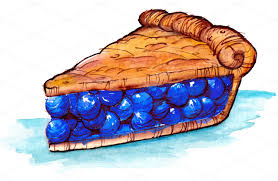 My older daughter has cerebral palsy. As time has passed her ability to chew and swallow has diminished so that now she eats only pureed foods. Yet she holds onto strong food choices.
My older daughter has cerebral palsy. As time has passed her ability to chew and swallow has diminished so that now she eats only pureed foods. Yet she holds onto strong food choices.
One of her favorite weekend activities is shopping at Whole Foods. There we buy fruit to puree, macaroni and cheese, again to puree, and generally wander through the store. Always, as we are getting ready to join the long line, she gets agitated. Since she is non-verbal, apart from a strong yes, I ask yes or no questions to try figure this out. “Do you want to buy something else?” “Aye,” she clearly intones. And then I know what it is. “Do you want to buy pie?” I ask. “AYE!” is her forceful response.
Now we have tried to puree the pie and she refuses to eat it. I’ve learned she wants to buy the pie, choose the pie, repeat, recall, and relish the entire scenario about the pie. And so we walk over to the pies, Apple or Blueberry, she gets to choose. And then all is well.
Now we don’t need to eat the pies (she is the only underweight member of our family) and I spend the day trying to figure out who I will give it to the next day. And to be honest, one part of the whole event is sad for me as I recall a stronger Amy who was able to bite, chew, and enjoy a wider variety of foods. But it is a bittersweet sad that turns to a smile. I am happy the buying and remembering of the pie brings her joy. I’m grateful she can find ways to assert her own voice and independence.
What does this have to do with literacy teaching?
 In our schools I am frequently asked by teachers to help them understand readers who are not making as much progress in reading as the teacher had hoped. First they list the deficits-- “He has so few sight words”, “She has no comprehension” or “ He doesn’t retain anything I teach”. Most of the time, their efforts
In our schools I am frequently asked by teachers to help them understand readers who are not making as much progress in reading as the teacher had hoped. First they list the deficits-- “He has so few sight words”, “She has no comprehension” or “ He doesn’t retain anything I teach”. Most of the time, their efforts
have been to focus on discrete skills through drills, worksheets, or other interventions. Yet progress is slow, and teachers become frustrated as the pressure to “move” kids increases. And so often this means students miss out on opportunities to make choices about books, access new ideas, and develop and assert their own reading identities—find their voice.
 When I talk with teachers, I urge them to recognize the importance of supporting students to become strong, critical, joyful readers as well as readers who move up levels or score well on tests. I urge them to embrace some seemingly contradictory positions. Be patient and really listen to the students who need more time despite the urgency to “catch them up” or “fix them”. Observe carefully, looking for trends and patterns in their reading processes to understand their intentions rather than only missteps. Use this information to really see your students as unique, strong, individuals, not as “low” or by the details of what they can’t do. And most importantly, encourage and celebrate their fledgling reading interests and desires by providing opportunities to explore a wide range of texts, not limited by the level or readability or your assumptions about educative value of the text.
When I talk with teachers, I urge them to recognize the importance of supporting students to become strong, critical, joyful readers as well as readers who move up levels or score well on tests. I urge them to embrace some seemingly contradictory positions. Be patient and really listen to the students who need more time despite the urgency to “catch them up” or “fix them”. Observe carefully, looking for trends and patterns in their reading processes to understand their intentions rather than only missteps. Use this information to really see your students as unique, strong, individuals, not as “low” or by the details of what they can’t do. And most importantly, encourage and celebrate their fledgling reading interests and desires by providing opportunities to explore a wide range of texts, not limited by the level or readability or your assumptions about educative value of the text.
Even though it seems crazy to buy a pie no one will eat, Amy’s assertion of choice, her desire is important to me to honor. I always buy the pie. We need to listen to the strenghts of our students and make sure we let them find their reading identities, their pies, too.
